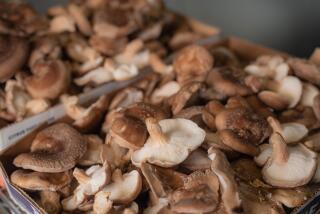The Secret to Cultivating Alstroemerias
Now that I have several alstroemerias, I thought it time to learn how to grow them. Alstroemerias are those almost azalea-like flowers on lily-like stems that are in every high-priced floristŌĆÖs bouquet nowadays. They are also handsome garden plants, growing much like a healthy clump of lilies to a useful height of about 2 1/2 feet.
They are one of the longest-lasting cut flowers; in my bouquets only ornithogalums last longer and--the story goes--this African bulb lasts so long it could be cut in Africa and sent to the European flower market on ships, before air freight made the trip quicker.
Alstroemerias come from South America, and the common name is Peruvian lily. Those of us who like to be the first on the block to grow something have been trying to grow them for several years, in my case without much luck.
I have tried the Ligtu hybrids, made famous by the Berkeley Botanical Gardens, which grows a whole field of them, but they didnŌĆÖt survive. I have tried growing them from the tuberous roots with no luck. These were planted in winter, grew, flowered for about a week and went dormant. I have grown them from plants, but they too were short-lived.
The ones I now have came from JudyŌĆÖs Perennials in San Marcos, and they are not like any I have grown before. They are so happy that they are blooming in pots, profusely.
Judy Wigand, owner of JudyŌĆÖs Perennials, told me they were new hybrids developed by Fred Meyer, and it turns out that they are actually rejects from a hybridizing program, though reject may be too harsh a word.
They are, incidentally, the same alstroemerias that have appeared at the Huntington Botanical Gardens plant sale and at the UC Irvine botanic garden sale, causing quite a stir. There is no doubt they will become one of the most popular of plants in years to come.
Meyer is hybridizing them under an American Floral Endowment sponsored by the Society of American Florists; they will eventually be released by the Department of Agriculture for the florist trade.
What they are looking for are heat-resistant, ever-blooming types. The seedlings appearing at nurseries and plant sales are ones Meyer thought would make good garden plants for Southern California, though he says even better ones will be available in the future.
He emphasizes that these plants are seedlings and vary considerably. Their parents are six species from Brazil and Chile (there are more than 100 wild kinds). The hybrids that favor the Chilean species tend to go somewhat dormant in summer, while the Brazilian types are the most ever-blooming.
All flower a lot more than most plants in the garden, and Meyer and Wigand agree that keeping the seed pods picked and fertilizing after flowering keeps them going.
DonŌĆÖt cut the stems to the ground until they have browned or unless there are plenty more on the way; just snip off the top with the seed pods. (Meyer suggests not growing any from seed you save yourself because they are likely to turn out poorer than their parents.)
In WigandŌĆÖs experience, alstroemerias flower most in spring and early summer and then again in the fall, though some of the seedlings flower year-round. She finds that they do best in a heavily amended soil that is full of organic matter, and she always mulches the plants with commercial ground bark or sawdust (the kind sold for amending or improving the soil).
They like average watering but do not like to go dry. You can let them go dry for summer, but they will die to the ground and go dormant, though they will most likely return in the fall.
They like full sun on the coast but seem to do better in partial shade inland because they are not that heat-resistant. These alstroemerias can be grown, and will flower profusely, in containers, but Meyer suggests planting them in a big one so the soil doesnŌĆÖt get too warm from the sun beating on the sides of the pot.
In the ground, they will grow to 2-foot-wide clumps in about two years, and they can be dug and divided if you want to increase your stock. This is best done in the fall because they do most of their growing during cool months.
Mine are going to stay in their pots until space opens in the garden in the fall.
If you would like to be the first on your block, you can try JudyŌĆÖs, or Stallings Ranch Nursery in Encinitas, which will have a stock by September. Some are also being grown by wholesale nurseries, so you might even spot one in a local nursery.
The best clones will be available from Tropic World in Escondido in about a year. They will be calling their selections Meyer Nonstop alstroemerias.
Other interesting things are on their way from Meyer, who recently was made a research associate at UC Irvine, and whom Paul Hutchinson of Tropic World calls ŌĆ£a modern-day Luther Burbank.ŌĆØ
Hutchinson has some of MeyerŌĆÖs new calla lilies, including a purple, but donŌĆÖt look for these to be for sale for awhile. And, Meyer is working with the ornithogalums, those long-lasting cut flowers.






